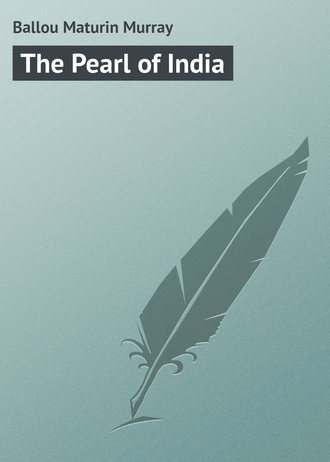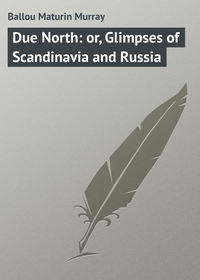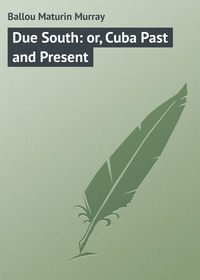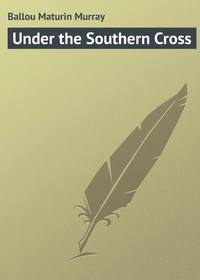 полная версия
полная версияThe Pearl of India
One is vividly reminded by these peculiar and enduring structures of a similar famous place of Hindu worship cut out of the solid rock on the island of Elephanta in the outer harbor of Bombay, and also of those found at Ellora and Carlee, in India proper. These three Buddhist temples are known to have been in existence for about twenty centuries, and are very similar in design. The elaborate sculptures in bas-relief which decorate them are almost identical in character, but they have little or no artistic merit, being in fact as crude as Chinese or Japanese idols, mere caricatures as seen from a modern point of view, and yet they are clearly the result of a distinctive purpose. As to depicting the human figure with any regard to its anatomy, that was not understood by these artists, any more than are the laws of perspective by the Chinese or Japanese of to-day. So in ancient Egyptian sculpture, an approximation to the true outline of the human figure is all that is attempted. The stone pillars and figures at Elephanta, so venerable from age and association, were nearly destroyed by French cannon-balls, the guns being brought on shore at considerable trouble, and maliciously directed, for this purpose. It seemed to be a fixed principle with the soldiers of the first Napoleon to purloin everything of value which was portable in the countries they invaded, and what they could not steal and carry away, with true barbaric instinct they destroyed. Churches, charitable institutions, hospitals, were all alike looted by these French vandals. Even tombs were invaded by them in their rapacity, as at Granada, where the leaden coffins in the royal vaults were pried open with bayonets in search of treasures supposed to have been buried with the bodies. At Seville, they broke open the coffin of Murillo, wherein finding nothing of commercial value, they scattered the ashes of the great master in art to the wind. It will also be remembered that Marshal Soult – to his lasting disgrace be it recorded – treated the ashes of Cervantes in a similar manner; a most petty and disgraceful meanness for a marshal of France to be guilty of.
The Mahawanso, "Genealogy of the Great," a native chronicle, contains a history of the several dynasties which have controlled the island from B. C. 543 down to a. d. 1758. This unique and remarkable Singhalese book is a metrical chronicle written in Pali verse, and forms what is universally received as an authentic and most invaluable record of the national history of Ceylon. A scholarly translation of the same is now extant in English. Pali, as the reader doubtless knows, is a dead language founded upon the Sanscrit, though Buddhists claim that it is the original of all tongues. This is an assumption easily disproved by Egyptian inscriptions dating back over six thousand years. The island, under its Sanskrit name of Lanka, is also the subject of a mythical poem of the Hindus, and its conquest by Rama is the theme of the Ramayana, doubtless one of the most ancient epics in existence. The Mahawanso, though the oldest, is by no means the only Singhalese chronicle of a historic character. It was designed by a priest named Mahanamo, who compiled the early portion, commencing five centuries and more before Christ, and bringing it down to the year 301 of our era. After this it was continued by able successors, who carried on the original plan of the beginner to the period when the English took forcible possession of Ceylon. There are several comprehensive manuscripts devoted to native history, written upon talipot palm-leaf, carefully preserved in the museum at Colombo.
Besides these important records there is abundant evidence of a tangible character to show that there once existed upon this island a great and powerful empire in a condition of advanced civilization. The gigantic remains of palaces and temples tell us this. There are also evidences of a system of irrigation which was remarkably perfect in conception and consummation, though it must have been achieved by the simplest means, that is, by the aid of no mechanical facilities such as we possess. This system covered the face of the country, north and south, like a network. Immense lakes were formed by damming the natural outlets of the mountain streams at the mouth of extensive valleys, and that was all that was artificial about them. Nature had prepared the way; still, the amount of labor involved in the practical application of the principle was enormous. The remains of these great reservoirs thus created are objects of admiration to our modern engineers, not only for the boldness and magnificence of their construction, but also for the beneficence of their purpose. The marvelous ruins of these reservoirs are the proudest and most significant monuments which remain of the former greatness of this country. No constructions for a similar purpose found in any part of the world have ever surpassed them. So long as they were in repair and fully operative, the people of Ceylon had no occasion to go abroad for rice upon which to subsist. The grand supply of water for the distributing tanks was conducted from the distant mountains, through dense forests, across broad ravines, and around the sides of intervening hills, by stout channel-ways miles and miles in length. No considerable population could have been supported in a country subject to prolonged droughts without the aid of some such fertilizing agency, and no other system would have been so well adapted to the raising of the staple grain of the island. Most of these artificial lakes are now in ruins, overgrown with jungle grass, and in some instances by heavy forests.
No one can truly say what caused the decadence of the several ancient capitals now lying in the dust, leaving only a blank memorial of their former existence. It is a puzzling question as to what could have swept a population of millions from the face of the globe and left no clearer record of their occupancy and departure. When there is pointed out to the traveler in Japan a location where a big and populous city once stood, but which is now only a series of thrifty grain-fields, no great surprise is felt. Japanese houses are only constructed, as a rule, of bamboo frames with tissue coverings, but the ruined cities of Ceylon were built of stone and brick, presumedly indestructible except by some great and general catastrophe. The ruins of Anuradhapura show that in mediæval times it must have been a city containing a vast concourse of people. We know that it was recognized as the capital of Ceylon from three to four hundred years prior to the birth of Christ down to the year 770 of the present era. It has been justly called the Palmyra of Ceylon, and was contemporary with Babylon and Nineveh. It was a royal city, wherein ninety kings reigned in succession, and its dimensions exceeded the present area of London. What a grand and imperial metropolis it must have been in its pristine glory! At a time when England was still in a condition of barbarism, this capital of an island in the Indian Ocean was at the zenith of its prosperity, enjoying luxuries which argued a high condition of civilization. The reason for selecting this plain in the heart of the country as a suitable location for its capital is not obvious, except that from the earliest ages the spot has been sacred to the votaries of Buddha. Its site is near the centre of the great plain which occupies the northern portion of the island, about one hundred miles from Kandy, and three hundred feet above the level of the sea.
Here, amid tall trees and thick undergrowth, are scattered hundreds, nay, thousands of stone columns, huge monoliths, granite statues, fragments of grand palaces, and elaborate public buildings, which once adorned broad and level thoroughfares, while the surrounding country exhibited a wide expanse of rice-fields irrigated by numberless canals, together with all the beauty of cultivated tropical vegetation. The early chronicles tell us of the surprising loveliness of this region round about the ancient metropolis, the brilliancy of its native jewels, the fertility of its carefully nurtured soil, its magnificent palms, the abundance of its fruits, the sagacity of its elephants, and the constant fragrance of its spice-laden atmosphere.
Anuradhapura! how little we of the nineteenth century have even heard of its people, who built temples of stone and palaces of marble, – a nation which lived for twenty centuries in oriental splendor; a city which was rich, populous, and famous, long before Rome had risen to power; a capital which achieved such ambitious architectural results only to sink at last suddenly and mysteriously into oblivion. What the possible purpose could have been in creating such a singular page in the annals of history as the building and peopling of a giant metropolis on this Indian island, whose accomplished mission illustrates only the mutability of all terrestrial things, only that inscrutable Wisdom which rules the universe can answer.
Except the mountain range which so nearly divides the island at its centre, and the spurs which it throws out at intervals, there are few elevations worthy of notice in Ceylon. One, known as Mihintale, about a thousand feet in height, dominates the ruins of the ancient city just described, and is so perpendicular that to reach its summit one must avail himself of the artificial steps cut in the solid rock. These stones, smoothed and indented by centuries of use, are said to have been thus worn by thousands and thousands of pilgrims, who ascended to the shrine above upon their knees. This notable hill, which almost deserves the name of mountain, was fortified by the aborigines in the olden time, as shown by irregular lines of defensive works in stone, whose dismantled and disintegrated condition testifies to their antiquity. On the summit stands a shrine, showing that it was held to be a sacred spot from the earliest ages, probably long before the date when the now mouldering capital was founded. The view afforded on either hand from the apex of the mount embraces the far-away ocean, and the nearer sea of undulating forests and groves of palms, clad in the exquisite verdure of the tropics.
Anuradhapura was the largest city in the island, and is confidently asserted to have contained, in its prime, three million people, over four hundred thousand of whom were fighting-men. But there were others, considerable in size and importance, which existed during the period of its prosperity. The records show that this ancient metropolis was fifty-two miles in circumference, or sixteen miles across in a straight line from the north to the south gate, covering two hundred and fifty-six square miles! What have we in modern times to equal these ruins in spaciousness? Perhaps some deduction should be made from such remarkable figures. Of course, the reader will understand that the area here given was not actually covered by solid blocks of dwellings. Private residences were generally surrounded by small but elaborate gardens. There was ample air space about the temples, palaces, and public buildings, together with large open commons for military parades, for public baths, for elephant fights, for political forums, and market-places. Spaciousness and elegance were the characteristics of this ancient Singhalese metropolis, this grand city of the plains, where one stands to-day surrounded by centuries of tangible history. The eye rests upon miles and miles of broken stone statues of bulls, elephants, sarcophagi, and heavy capitals of granite columns, many of whose delicate, artistic capitals and designs are still intact.
All oriental narrative is tinctured with exaggeration, but Sir James Emerson Tennent, so long officially connected with the island, and personally familiar with the ruins of Anuradhapura, says no one who visits the place to-day can doubt that Ceylon, in the zenith of its prosperity, contained ten times its present population; and as he wrote this in 1859, when the aggregate was about one million, he wished to signify that the number of inhabitants, at the period to which he referred, was probably ten millions. The same writer tells us that this density of population must have been preserved through many centuries, in spite of revolutions and invasions, in order to produce the results, the ruins of which are still visible to all observers.
That the people of Anuradhapura were early and skillful workers in brass, iron, and glass, articles unearthed among these ruins abundantly testify. Further explorations and excavations will doubtless result in valuable information. Five or six feet of earth, upon an average, must be removed before the process of uncovering can be said to have fairly commenced, so that the prospective labor of exhumation is simply immense. Still, almost every year brings some new enthusiast to the front, whose time and money are freely devoted to this object until his ardor is appeased, and he leaves the field to some one else. A steadily sustained effort, aided and directed by the government, might accomplish something worth recording, but such desultory and spasmodic attempts are of very little account. At Pompeii, where, by persistent effort, a whole city has been unearthed, we see what such exhumation signifies, though the circumstances are not precisely similar, the one having been suddenly covered by an eruption of the neighboring volcano, while the other yielded to the wear of time and the effect of foreign invasions. A score of cities, however, like Pompeii would not cover the area once occupied by this vanished metropolis.
The ancient capital was named in honor of a certain prince, Anuradha, by whom it was founded twenty-five centuries ago. A thousand years since, this city was still populous, gay, and beautiful, with fragrant gardens, thriving shops, proud dwellings, gilded palaces, lofty temples, religious processions, and frequent displays of royal pageants. The Singhalese chronicles are full of references to agricultural prosperity, to ample herds, the breeding of cattle, and the extensive culture of grain. They speak of women who were treated with great deference, and of priestesses and queens who held high places with honor. Rich furniture was used in the dwellings, and costly textures for dress, these of course imported from other countries. Though the inhabitants of Anuradhapura were not themselves a maritime people, they were constantly visited by others from afar, who brought with them rich goods to exchange for pearls and precious stones. We know that Ceylon was rich in these at that period, even as she is at the present time, and exported peacocks, apes, and ivory. In the ancient Hebrew records, the names of these were the same as those known at present to the natives in this island. To-day, mutability is written upon its scattered and neglected ruins in a language all can understand. Who can wonder that individuals perish and are forgotten, when the entire population of a great, imperial metropolis thus vanish, while their noblest and most enduring works crumble into dust? The significance of such instances should humble the proudest mortal who walks the earth. The spot where the Brazen Palace, so-called, once stood in the ancient capital still shows scores of granite columns in the shape of undressed monoliths, projecting about twelve feet above the level of the ground, upon some of which there exist the remains of elaborate capitals, closely resembling the Grecian Corinthian order. This edifice, dating about two hundred years before Christ, was not the royal residence, but a palace devoted to accommodation of the priesthood, and was originally nine stories in height, covering a square of ground measuring two hundred and thirty feet each way. "The roof," according to native chronicles, "was of brass, and its great hall, which was supported by golden pillars, also contained a throne of solid ivory," though what the Buddhist priesthood required of a "throne" we are not informed.
This description of the great hall with its golden pillars sounds perhaps like an oriental exaggeration, but the people of those days came originally from India, where such examples of extravagance were by no means unknown during the Mogul dynasty. The probability is that the Brazen Palace was in reality the royal residence. Speaking of Indian extravagance, we all remember the peacock throne of the king of Delhi, – a throne of solid gold, six feet long and four feet broad, surmounted by a canopy of gold, and supported by twelve pillars composed of the same precious material. The back of this costly structure was made to represent a peacock with its tail-feathers expanded, hence the name. The natural colors of the feathers were closely imitated with rubies, sapphires, diamonds, and other precious stones. The total value of the whole exceeded thirty million dollars. The author has stood within this royal chamber at Delhi, but the gorgeous throne has long since disappeared. Enough, however, still remains to show what regal splendor must have existed in this marvelous palace. These Mogul rulers used costly gems, gold and silver, together with precious marbles and rarest stones, as freely as modern potentates employ granite, combined with bricks and mortar. The wealth of the then known world was in the possession of a very few individuals, and the poor were all the poorer in comparison; despotism was rampant, and royalty commanded at will the unpaid services of the million.
Near the site of the Brazen Palace of Anuradhapura are several dagobas, partially hidden by rank tropical verdure. One of these peculiar structures was originally over four hundred feet in height, antedating the Christian era by many years. Does the reader realize what an amount of solid masonry such a structure represents? When we say that this dagoba was nearly twice the height of Bunker Hill Monument, and that it was three hundred and sixty feet in diameter at the base, the comparison may aid the imagination. Verily, nothing but the Egyptian pyramids compare in magnitude with these shrines of Ceylon, while no modern engineering enterprise excels in immensity the artificial lakes which were created upon her surface. One writer has gone into a careful calculation regarding the structure, and says that it contained material enough originally to build a wall ten feet high from London to Edinburgh.
These peculiarly shaped dagobas are scattered all over the island, each being the receptacle of some saintly relic. Tradition says they are thus formed to resemble a bubble floating upon the water, but they are really bell-shaped, and most of them have a low, ornamental spire. Near the summit is the secret chamber wherein is deposited the sacred treasure. Time effaces all mundane things. With the exception of the Temple of the Tooth, at Kandy, no one can say what special relic any one of these remarkable structures was originally designed to shelter.
Let us quote for the reader's edification an ancient native description of this famous city of the plain when it was in its glory. It is a literal translation from the original: —
"The magnificent city of Anuradhapura is refulgent from the numerous temples and palaces whose golden pinnacles glitter in the sky. The sides of its streets are strewed with black sand; they are spanned with arches bearing flags of gold and silver; on either side are vessels of the same precious metals, containing flowers; and in niches are statues holding lamps of great value. In the streets are multitudes of people, armed with bows and arrows; also men powerful as gods, who with their huge swords could cut asunder a tusk elephant at one blow. Elephants, horses, carts, and myriads of people are constantly passing and repassing. There are jugglers, dancers, and musicians of various nations, whose chank shells and other musical instruments are ornamented with gold. The distance from the principal gate to the opposite gate is four gaws (sixteen miles); and from the north gate to the south gate four gaws. The principal streets are Moon Street, Great King Street, and Great Sandy Street. In Chandrawakkawidiya are eleven thousand houses, many of them being two stories in height; the smaller streets are innumerable. The palace has immense ranges of buildings, some of two, others of three stories in height; and its subterranean apartments are of great extent."
Sir J. E. Tennent gathers from various ancient sources, including the veritable Mahawanso, that Anuradhapura, between four and five centuries before Christ, contained the temples of various religions, – "temples and palaces whose golden pinnacles glittered in the sky," – besides spacious public gardens and free baths, together with almshouses and hospitals, in which animals as well as human beings were tenderly cared for.
One king gave the "corn of a thousand fields" for the support of the hospitals, another set aside a certain quantity of rice to feed the squirrels which frequented the city gardens, while a third monarch displayed his skill in treating the diseases of elephants, horses, and domestic cattle. The streets were lined with grand shops and bazaars. On festive occasions, barbers and dressers were stationed at each entrance to the capital for the convenience of strangers who visited the city. Public officials vied with each other in their patriotic deeds designed for the public good.
In one corner of the widespread ruins of Anuradhapura there is now a small village, with a Christian mission and school for the native children. There are also a few bazaars, a post-office, telegraph station, and a court house, which serve, by affording a strong contrast to the former splendor which reigned here, to emphasize the historic grandeur of the defunct capital.
CHAPTER IV
Oriental Dagobas. – Ancient City of Pollonarua. – Laid out like our Modern Capitals. – Unexplored Ruins. – Elaborate Stone Carvings. – Colossal Stone Figure. – The "Buried Cities." – The Singhalese not a Progressive People. – Modern History of Ceylon. – Captured by the English. – The "Resplendent Island." – Commercial Prosperity. – Increasing Foreign Population. – Under English Rule. – Native Soldiers. – Christian Sects and Churches. – Roman Catholic Church. – Expulsion of the Jesuits.
The very interesting and in many respects unique ruins of Anuradhapura, like those pertaining to the city of Pollonarua, with its curious and enormous mass of crumbling brick-work in the shape of a dagoba surmounted by a temple, are supposed to have been thus mouldering in the dust for more than six centuries. These dagobas, doting with age, as we have shown, are relic shrines, like in purpose to the pagodas of Burmah, which they somewhat resemble. Their substantial outside finish must have given them very much the appearance of being built of pure white marble. In dimensions they are exceeded only by the pyramids of Ghizeh, but there is no genius or architectural excellence evinced in the construction of either. Judged by the light of our day, there is no legitimate reason for their existence. Religious fanaticism gave birth to one, and personal pride to the other. They neither subserve the purpose of utility nor of beauty. As monuments of personal aggrandizement, or as individual memorials, what total failures they have proved! Think for a single moment of the vast contrast between either of the Egyptian pyramids, or these bell-shaped dagobas, with their plain stuccoed coverings, and that modern shrine and tomb combined, – the Taj Mahal of Agra. The pyramids and dagobas are crude, barbaric embodiments of bulk and imposing loftiness; the other is a realization in marble of a poetic dream. The former are remarkable only for magnitude; the latter, for its exquisite grace.
There is sufficient evidence still left us to show that the olden city of Pollonarua was laid out in a perfectly systematic way, and built up in the most regular manner. Its founders evidently started with a well-perfected purpose. It was not a chance settlement of a few cabins, which gradually increased hither and thither in various directions until it assumed the proportions of a metropolis. Notwithstanding the present confusion, the general features of its topography are clearly discernible amid the mounds of mouldering material. The main street from the principal entrance-gate continued perfectly straight for four miles between royal palms to the opposite extreme of the city, crossed at right angles in the centre by a similar thoroughfare, thus forming two main streets, which terminated at four great gates of entrance and exit to and from the town, – north, east, south, and west. From these main streets radiated lateral and smaller roadways, evidently occupied by humbler dwellings, together with an occasional temple or other public building. The ruins of what is known as the Treasure House of Pollonarua are unusually interesting, as exhibiting some of the finest and best preserved bas-reliefs to be found in Ceylon, and as showing also certain marked peculiarities of skill in architecture which prevailed in pre-Christian times. On either side of the principal thoroughfares of the city were handsome and substantial dwellings, palaces, and sacred temples. The latter, with their gorgeous gilded domes, were dedicated to various pagan gods. Other spacious buildings and open areas were devoted to pleasure entertainments for the masses of the people, not unlike the modern idea of public gardens and outdoor theatres.









